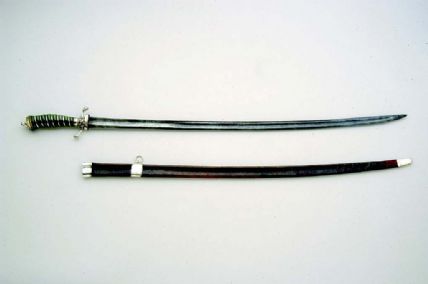Posts: 1,978 Location: Nipmuc USA
Fri 22 Jul, 2016 5:06 am
It is tough to gauge the third dimension from profile or pictures of a profile.
If there were an outline for blade cross sections, it would be a general philosophy. Bade thickness in the 8mm-10mm at the guard. Reducing thickness drastically in the first few inches to the
center of gravity, say 4mm-5mm. Then a linear distal to the pointy end. Many reduce to quite thin at the point in the last inches. If the Washington sword blade has a false edge to the blade, that is another section to consider. A good many swords of any type often have a cog at about a third of the overall length. The Washington sword with that length and light hilt certainly loos like it would be about that range.
The Washington sword type is not uncommon at all and these blades have a fairly stiff point, so leaving a bit more meat to the point. The fuller going to just before the point, which offsets weight that otherwise be ground off on blades with fullers ending a quarter or third back.
Honestly, if one looks at auction pictures, one can get a pretty good look at blade cross sections. The radical concave distal putting mass towards the hand is very common to a broad variety of swords ranging from very narrow small swords to larger sabres.
Cheers
GC
